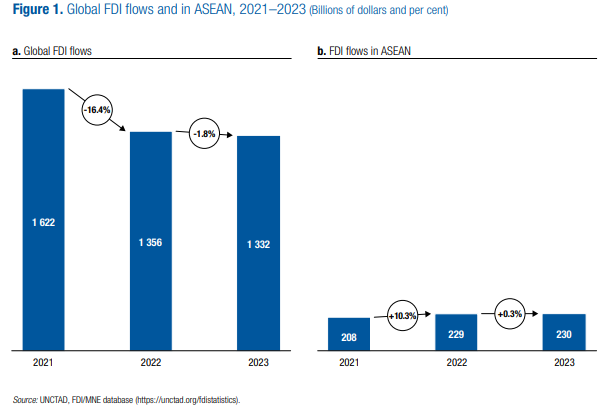In 2023, manufacturing in ASEAN captured more than $50 billion in Foreign Direct Investment (FDI). This amount represents 22% of total inflows to the region.
The region’s sustained growth is due to several factors. First, it has an increasingly skilled labor force. Second, it has abundant natural resources. And rapid urbanization and growing infrastructure spending contribute to this development.
FDI
ASEAN is also strategically located at the confluence of major trade routes. Every year, $5.3 trillion in world trade passes through this area.

In terms of FDI, ASEAN reached a record $230 billion in 2023. Although the increase was marginal-less than 1%-it came despite a 10% decline in global FDI. This marked the third consecutive annual increase, cementing ASEAN’s position as the largest recipient of FDI among developing regions. ASEAN now accounts for 17% of global FDI inflows, up from 16.5% in 2022.
In 2023, five key industries accounted for 86% of FDI inflows. FDI in financial activities, which includes banking and insurance, increased 53% to $92 billion. In addition, investment in high value-added services, such as professional and scientific activities, grew from $300 million to $21 billion. This investment supports industrial upgrading in several member states.
Manufacturing in ASEAN
Although investment in manufacturing, wholesale and retail trade, and transportation declined, the manufacturing sector remained crucial. Notably, the number of announcements of new investment projects in manufacturing facilities doubled in 2023.
The top 10 sources of FDI constituted 80% of total FDI in 2023, up from 75% in 2022. This highlights the key role of these investor source countries. The United States and China were particularly prominent. Flows from the United States doubled to US$74 billion, accounting for one-third of all FDI in the region.

